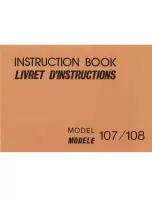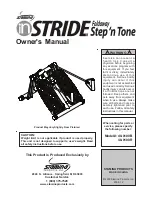
– 54 –
WARNING :
Turn OFF the power before starting the work so as to prevent accidents caused by abrupt start of the sewing machine.
Trouble
Cause (1)
Cause (2)
Checking order and adjusting procedure
14. Double chainstitch needle
thread is loose.
14-1) Thread tension
1-A)
The looper thread tension is too high,
and the needle thread tension is too low.
Reduce the looper thread tension to a minimum,
and increase the needle thread tension.
14-2) Thread cam
2-A)
The thread cam draws out an insuffi
-
cient amount of thread.
Refer to the pertinent Standard Adjustment.
2-B)
The thread cam timing is bad.
Refer to the pertinent Standard Adjustment.
14-3) Needle
3-A)
The needle is too thin for the thread used.
Replace the needle with a proper one.
14-4) Double chainstitch
needle thread take-
up guide
4-A)
Drawing amount of the needle thread is
insufficient.
Refer to the pertinent Standard Adjustment.
15. Uneven overlocking stitches
The knotting position of the up-
per and lower looper threads
varies as shown below.
15-1) Looper thread ten-
sion
1-A)
The upper and lower looper thread ten-
sions are not enough.
Slighrly increase the upper and lower looper
thread tensions.
15-2) Looper thread take-
up
2-A)
The looper thread take-up (left) is too
high.
Slightly lower the looper thread take-up (left).
15-3) Knife width
3-A)
The knife width is unsuited for the over-
edging width.
Make the overedging width slightly smaller than
that given for the knife width.
15-4) Thread path
4-A)
Scratches on the thread path catch
thread.
Check the thread path for scratches.
15-5) Presser foot
5-A)
The presser foot cones into contact
unevenly with the throat plate and feed
dogs and tends to meander.
Make the presser foot come into contact with
them evently.
15-6) Thread stand
6-A)
Thread dose not come out smoothly.
Make the thread come out smoothly.
16. Uneven double chainstitches
16-1) Thread tension
1-A)
The looper thread tension is not
enough.
Slightly increase the tension.
16-2) Presser foot
2-A)
The presser foot comes into contact
with the throat plate unevenly.
Make the presser foot come into contact with the
throat plate evenly.
2-B)
The presser foot pressure is not
enough.
Increase the presser foot pressure.







































